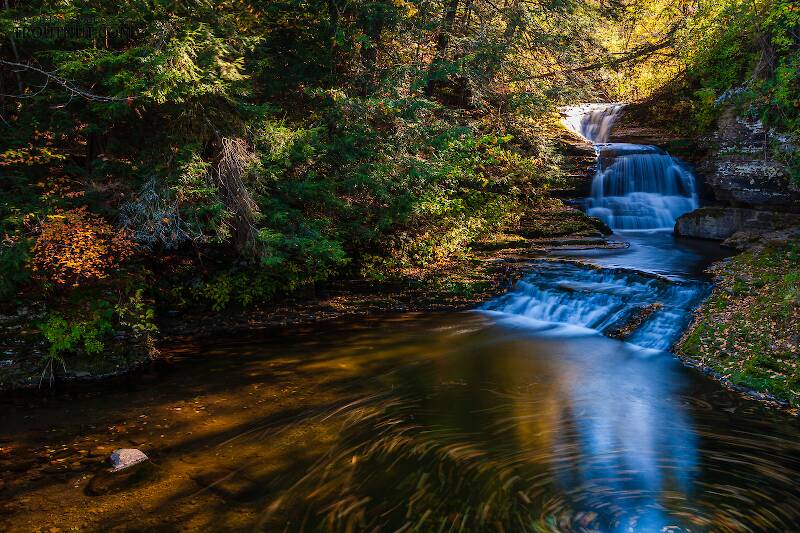
Hex Mayflies
Hexagenia limbata
The famous nocturnal Hex hatch of the Midwest (and a few other lucky locations) stirs to the surface mythically large brown trout that only touch streamers for the rest of the year.


Mayfly Species Neochoroterpes oklahoma
Species Range
Physical description
Most physical descriptions on Troutnut are direct or slightly edited quotes from the original scientific sources describing or updating the species, although there may be errors in copying them to this website. Such descriptions aren't always definitive, because species often turn out to be more variable than the original describers observed. In some cases, only a single specimen was described! However, they are useful starting points.
Male Spinner
Wing length: 7.5 mm
This is a very dark brown species, with grey-brown mottled abdomen. Head dark brown above with paler brown antennae. Thorax shining blackish brown above, with a very narrow pale line in the notal furrow, and a wider pale strip just beneath it before the wing roots. Sides and sterna also dark brown. Legs brown and dull yellow, with whitish tarsi. The brown about equals the yellow in extent, is very diffuse, showing little cross-banding, but is darker on the longitudinal carinae. Wings subhyaline, darker in the subcostal space, and with brown longitudinal veins in the costal half, behind which they are transparent, as are all cross veins.
Abdomen greyish brown, paler beneath, darker on the end segments, and with a pretty pattern on segments 2 to 9 of large pale middorsal V marks through which runs the narrow middorsal pale line conjoining them. On the lateral margin of segments 2 to 8 there is a minute white spot surrounded in front by a blackish crescent. Tails greyish, the segments paler toward the base of each, obscurely darkened on the joinings, and so, faintly ringed. Sides of the 9th sternite marked with an elongate brown triangle; remainder white, including the forceps. Penes brown (see fig. 140).
Start a Discussion of Neochoroterpes oklahoma
References
- Needham, James G., Jay R. Traver, and Yin-Chi Hsu. 1935. The Biology of Mayflies. Comstock Publishing Company, Inc.
Mayfly Species Neochoroterpes oklahoma
Species Range
Resources
- NatureServe
- Integrated Taxonomic Information System
- Global Biodiversity Information Facility
- Described by Traver (1934)

